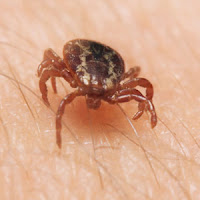Sunday, September 26, 2010
Brucellosis
"Brucellosis is a highly contagious zoonosis (disease that can be transmitted from animals to humans) caused by ingestion of unsterilized milk or meat from the infected animals, or close contact with secretions." (Wiki) Brucellosis can be found in many different regions around the world, but the greatest number of cases are in both central and southwest Asia. The disease is spread when an animal gives birth or has it baby aborted due the bacteria in its system. The bacteria found within the after birth is what's contagious. "The bacteria can survive outside of the animal in the environment for several months, particularly in cool moist conditions." (oie.net)
The disease was first discovered during the 1850s. "Symptoms in humans include intermittent or irregular fever, headache, weakness, profuse sweating, chills, weight loss, and general aching." (oie.net) To prevent an outbreak, many countries test the milk as well as the meat before it is distributed to the general public. In the case of an outbreak the disease can be held at bay with the vaccination that's available to the infected.
The disease was first discovered during the 1850s. "Symptoms in humans include intermittent or irregular fever, headache, weakness, profuse sweating, chills, weight loss, and general aching." (oie.net) To prevent an outbreak, many countries test the milk as well as the meat before it is distributed to the general public. In the case of an outbreak the disease can be held at bay with the vaccination that's available to the infected.
Work Cited
Thursday, September 16, 2010
Duchenne Muscular Dystrophy
Duchenne Muscular Dystrophy or DMD for short, is on of the more common genetic diseases in both Russia and the world. Muscular Dystrophy is the name for a group of medical conditions that effect how a person muscles work. DMD is the most common form of the illness. DMD effects one in every 3500 boys around the world, Russia is one such place where the illness is found. Symptoms of DMD could be things such as, kids not being able perform simple everyday tasks that many of us take for granted. Tasks such as running, jumping, and climbing.
The effects of DMD are progressive and becomes more of a burden over time. It is important to spot the disease early. That way treatment can be given, that may be able to slow the effects of the disease. Physical therapy is one such treatment.

The effects of DMD are progressive and becomes more of a burden over time. It is important to spot the disease early. That way treatment can be given, that may be able to slow the effects of the disease. Physical therapy is one such treatment.

Monday, September 6, 2010
Lyme Disease and It's Origin
"Lyme disease is the most common tick-borne illness in North America and Europe. Lyme disease is caused by the bacterium burgdorferi. Deer ticks, which feed on the blood of animals and humans, can harbor the bacteria and spread it when feeding."(Mayoclinic.com) Lyme disease was once believed to be native only to the U.S., today we now know that is no longer true. In 2008, Yale researchers conducted a study on Lyme disease carrying ticks and their true origin. Using a computer-generated evolutionary tree, the researchers soon found that the Lyme disease of today are more closely related to its ancestors in Europe. There are now 25,000 cases of the disease reported in the Europe each year and is slowly growing. If left unchecked it could one possibly become a world wide problem.
Work Cited
Mayo Clinic Staff. Lyme Disease. 1 May 2010. http://www.mayoclinic.com/health/lyme-disease/DS00116.
Thursday, September 2, 2010
Chagas, The Latin American Disease
"The etiological agent of the disease, is an ecological relationship, sustained for more than 60 million years between the protozoan parasite, marsupials, and more recently with primates with the aid of triatomines, the insect vectors." (idrc.ca) Due to the disruption of many of the eco-systems in which the tiatomines (Kissing Bugs) thrive, the infectious bugs have began to find their way into many of the underdeveloped homes and or towns nearby. "The eventual contact of an infected vector with humans propitated the apperance of Chogas disease, considered to be an important public health problem receiving increasing priority for control." (idrc.ca)
Worked Cited
Puppo, Andrea. Tropic Diseases in Latin America. 20 11 2002. 30 08 2010 http://www.idrc.ca/en/ev-22926-201-1-DO_TOPIC.html
Subscribe to:
Posts (Atom)





